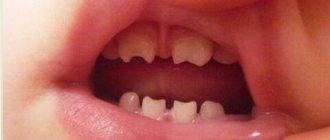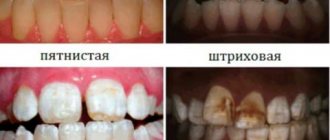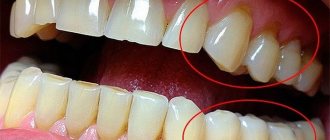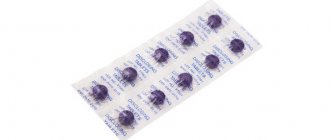Definition
· Poisoning occurs when consuming fluoride (F, Latin fluorum) or fluorine-containing substances in toxic concentrations.
· The toxicity of fluorine compounds depends on the degree of solubility of the compound.
· The toxic dose in children under 5 years of age is considered to be greater than 25 mg of fluoride.
· The toxic dose in people over 5 years of age is considered to be more than 5 mg fluoride/kg body weight.
· Consumption of more than 17-22 mg sodium fluoride/kg (8-10 mg fluoride/kg) causes symptoms of severe toxicity in children.
· Sodium fluoride is a commonly used compound F in caries prevention (eg, toothpaste and other dental care products). 1 mg of fluoride corresponds to 2.2 sodium fluoride.
· Swallowing too many fluoride tablets or toothpaste is common in the 1-3 year age group.
· Some insect/pest poisons are also rich in F and their consumption causes poisoning.
· Unlike children, high fluorum intake in adults is often intentional (eg, suicide attempts).
The effect of fluoride on dental and oral health
Data from numerous scientific studies leave no doubt about whether fluoride is beneficial for teeth. First of all, it protects them from caries and maintains oral health. The presence of ions of this element in saliva is critically important. The fact is that they have the ability to be embedded in the crystal lattice of hydroxyapatite, a compound that forms the basis of tooth enamel [12].
Due to this and other mechanisms of action of fluoride ion:
- prevents demineralization (loss of minerals) of enamel and strengthens it, protecting teeth from acid damage and caries [12];
- promotes remineralization of enamel, that is, helps restore the content of minerals in it and eliminate defects on its surface [12];
- suppresses the growth of pathogenic bacteria in the oral cavity [13];
- reduces acid production by pathogenic bacteria in dental plaque [14].
It was also found that in addition to systemic (internal, coming from water or food), oral health is also effectively protected by local fluoridation [12]. This is the name of a method in which fluoride is applied directly to the tooth surface, without swallowing the drug. For this purpose, fluoride-containing toothpastes , mouth rinses, and professional dental fluoride varnishes are used [12].
Etiology and pathogenesis
· Gastrointestinal genes are often dominant. These genes are caused by the formation of irritant/corrosive and systemic hydrogen fluoride in the acidic environment of the stomach, which in turn causes gastrointestinal irritation and erosion.
· Fluoride tablets contain the filler sorbitol, which causes nausea, vomiting and diarrhea without necessarily consuming toxic doses of fluoride.
· Once F is absorbed, it binds to calcium and causes hypocalcemia. It is this hypocalcemia that is the main cause of the symptoms and consequences of poisoning.
· Fluorine also acts directly cytotoxic, affecting various cellular enzyme systems.
Diagnostics
Diagnostic criteria
· Ingestion of fluoride compounds in doses that cause characteristic symptoms.
· Possible mixed poisoning with another substance.
· Hypocalcemia due to any other cause.
Disease history
Signs of poisoning include nausea and abdominal pain, thirst and central nervous system depression (fatigue/lethargy). If excessive fluoride intake is suspected, the patient should answer the following questions to obtain a complete medical history:
- When did the reception take place? How much time has passed since then?
- What was accepted? In what form, and in what doses (amount of substance and concentration)?
- Consumption intention?
- Is there a danger of others using this substance by mistake?
It is worth considering that sodium fluoride is available as a medicinal product in the form of dentifrice (4 or 10 g plus solvent), dental suspension (22.6 mg/ml), toothpaste (5 mg/g) and chewing gum (0 .55 mg).
Benefits of Fluoride in Toothpaste and Other Oral Care Products
Today, experts consider fluoride-containing dental products to be the first line of defense against dental caries [15]. The range of such products is wide. These include:
- toothpastes and mouth rinses;
- specialized and professional fluoride-containing dental preparations - varnishes, filling materials, special solutions.
It has been established that caries in the initial spot stage is amenable to remineralizing therapy, in which the surface layer of the affected enamel is restored [4]. It uses professional preparations containing a high concentration of fluoride, which are applied only in the dentist’s office, in combination with fluoride toothpastes and rinses for home use [4]. To prevent caries, experts recommend that adult toothpaste contain at least 1450 ppm of fluoride [16]. Daily use of such toothpaste increases the mineralizing potential of saliva and promotes the incorporation of minerals into weakened tooth enamel. At the same time, it is important to exclude the ingestion of any fluoride-containing products due to the risk of excess fluoride entering the body and the development of fluorosis [17].
Despite the high effectiveness of such products, the fluoride content in toothpaste for young children carries a certain amount of risk. This is due to the fact that a child may swallow the toothpaste when brushing his teeth, which may result in exceeding the daily fluoride intake. Therefore, it is very important to teach children proper oral hygiene and explain that toothpaste should be spat and not swallowed. It is necessary that young children have an adult with them while brushing their teeth to help the child and monitor the correctness of his actions. This way, parents can be sure that the paste is being spat out. If the risk of ingestion is still high, for example, the child is unwell, it is better to use specially formulated children's toothpastes that do not contain fluoride.
List of sources
- Kono K. Health effects of fluorine and its compounds. Nihon Eiseigaku Zasshi. 1994 Dec;49(5):852-60. https://www.ncbi.nlm.nih.gov/pubmed/7830341 (access date: 02.22.2020).
- Medjedovic E, Medjedovic S, Deljo D, Sukalo A. IMPACT OF FLUORIDE ON DENTAL HEALTH QUALITY. Mater Sociomed. 2015;27(6):395–398. doi:10.5455/msm.2015.27.395-398. https://www.ncbi.nlm.nih.gov/pmc/articles/PMC4733546/ (accessed 02/22/2020).
- Sananda Dey,Biplab Giri,Fluoride Fact on Human Health and Health Problems: A Review.Med Clin Rev. 2015, 2:2. doi: 10.21767/2471-299X.100011 https://medical-clinical-reviews.imedpub.com/fluoride-fact-on-human-health-and-health-problems-a-review.php?aid=7968 (date access: 02/22/2020).
- Dentistry. Textbook Aleksandrov M.T., Bazhanov N.N., Medvedev Yu.A., Platonova V.V., Sergeev Yu.N. / Ed. N.N. Bazhanova. - M.: GEOTAR, 2008.
- Krylova L.V. Health status and level of fluoride provision for young children: dissertation... Candidate of Medical Sciences: 01/14/08 / Krylova Lidiya Valerevna [Place of defense: State Educational Institution of Higher Professional Education "Ural State Medical Academy"]. Ekaterinburg, 2012. https://elib.usma.ru/bitstream/usma/688/1/USMU_Thesis_2012_011.pdf (access date: 02/22/2020).
- Iordanishvili A.K. Fluorides: their importance for human health in modern conditions and prospects for use // Kursk scientific and practical bulletin “Man and his health”. 2022. No. 2. URL: https://cyberleninka.ru/article/n/ftoridy-ih-znachenie-dlya-zdorovya-cheloveka-v-sovremennyh-usloviyah-i-perspektivy-ispolzovaniya (date of access: 02.23.2020).
- International Program on Chemical Safety. WHO. https://www.who.int/ipcs/assessment/public_health/fluoride/en/ (accessed 23.02.2020).
- Fluoride and healthy teeth. Paediatric Child Health. 2002;7(8):575–584. doi:10.1093/pch/7.8.575. https://academic.oup.com/pch/article/7/8/575/2654220 (access date: 02/23/2020).
- Water, sanitation and hygiene. Water-related diseases: fluorosis. WHO. https://www.who.int/water_sanitation_health/diseases/fluorosis/ru/ (access date: 02/23/2020).
- Donskikh I.V. The influence of fluorine and its compounds on public health (review of literature data) // Acta Biomedica Scientifica. 2013. No. 3-2 (91). URL: https://cyberleninka.ru/article/n/vliyanie-ftora-i-ego-soedineniy-na-zdorovie-naseleniya-obzor-dannyh-literatury (date of access: 02/23/2020).
- Everett ET. Fluoride's effects on the formation of teeth and bones, and the influence of genetics. J Dent Res. 2011;90(5):552–560. doi:10.1177/0022034510384626 (access date: 02/23/2020).
- Knappvost A. Indications for use and mechanisms of caries-preventive action of deep fluoridation preparations - enamel-sealing and dentin-sealing liquids // Problems of Dentistry. 2005. No. 3. URL: https://cyberleninka.ru/article/n/pokazaniya-k-primeneniyu-i-mehanizmy-kariesprofilakticheskogo-deystviya-preparatov-glubokogo-ftorirovaniya-emal-germetiziruyuschego (date of access: 02.23.2020).
- Fernández CE, Fontana M, Samarian D, Cury JA, Rickard AH, González-Cabezas C. Effect of Fluoride-Containing Toothpastes on Enamel Demineralization and Streptococcus mutans Biofilm Architecture. Caries Res. 2016;50(2):151-8. doi: 10.1159/000444888. Epub 2016 Apr 14. https://www.ncbi.nlm.nih.gov/pubmed/27073873 (access date: 02.23.2020).
- Thurnheer T, Belibasakis GN. Effect of sodium fluoride on oral biofilm microbiota and enamel demineralization. Arch Oral Biol. 2018 May;89:77-83. doi: 10.1016/j.archoralbio.2018.02.010. Epub 2018 Feb 20. https://www.ncbi.nlm.nih.gov/pubmed/29482049 (access date: 02.23.2020).
- Carey C.M. Focus on fluorides: update on the use of fluoride for the prevention of dental caries. J Evid Based Dent Pract. 2014;14 Suppl:95–102. doi:10.1016/j.jebdp.2014.02.004. https://www.ncbi.nlm.nih.gov/pmc/articles/PMC4058575/ (accessed 02/23/2020).
- Novikova Zh.A. fluoride content in oral fluid in individuals with high caries intensity after using toothpastes with different fluoride concentrations // Bulletin of Dentistry. 2010. No. 2 (71). URL: https://cyberleninka.ru/article/n/soderzhanie-ftora-v-rotovoy-zhidkosti-u-lits-s-vysokoy-intensivnostyu-kariesa-posle-primeneniya-zubnyh-past-s-raznoy-kontsentratsiey- ftora (date of access: 01/29/2020).
- Walsh T, Worthington HV, Glenny AM, Marinho VCC, Jeroncic A. Fluoride toothpastes of different concentrations for preventing dental caries. Cochrane Database of Systematic Reviews 2022, Issue 3. Art. No.: CD007868. DOI: 10.1002/14651858.CD007868.pub3. https://www.ncbi.nlm.nih.gov/pubmed/30829399 (access date: 01/29/2020).
Research
If serious poisoning is suspected, the patient is hospitalized. The following blood tests are performed in the hospital:
· Blood sugar (hypoglycemia).
· Electrolyte balance is especially important to monitor.
· Hypocalcemia is usually the most serious and pathogenic variable.
· Hypomagnesemia and hyperkalemia are also observed in poisoning.
· Fluoride poisoning can cause liver and kidney damage. ALT and creatinine should be measured.
Other studies:
· ECG and cardiac monitoring in severe cases. There may be a widened QRS complex, arrhythmia, shock, and cardiac arrest.
Treatment
Treatment goals: avoid the harmful effects of fluoride and eliminate existing negative symptoms. It is recommended to drink plenty of milk or calcium-rich drinks. Calcium reacts with fluoride to form poorly soluble calcium fluoride, which is not easily absorbed.
Additional recommendations and treatment regimen depending on age and fluoride dosage.
Age
|
Fluoride in modern toothpastes
As mentioned above, various fluorine compounds are added to modern pastes, namely:
- Sodium monofluorophosphate. This compound disintegrates into ions at a low speed, which is why fluorine is also released very slowly. If a person is used to brushing his teeth for no more than a few minutes per procedure, then toothpastes with such a compound will be ineffective and even useless for him.
- Sodium fluoride has the property of quickly breaking down into ions and releasing fluorine. Provides rapid supply of necessary mineral components to the dental tissues, affecting their rapid strengthening. This effect also applies to children. Pastes with sodium fluoride are recommended specifically for use by children, since they do not have the habit and desire to brush their teeth for a sufficient amount of time.
- Aminofluoride ensures the supply of mineral components at an even higher rate than fluoride. When brushing teeth, the compound creates a film on the enamel that remains for some time after the procedure is completed. This means that fluoride will enter the enamel both during the actual cleaning and after it. Aminofluoride is the most commonly used component in the production of toothpastes recommended for both adults and children.
- The compound of tin and fluorine is a component of pastes, the popularity of which reached its apogee in the 20th century. Despite its good remineralizing ability, the compound has a serious drawback, namely, it stains individual areas of the enamel in a chalky color. These stains gradually darken over time, which negatively affects the aesthetic properties, especially when it comes to teeth that fall into the smile zone. In addition, the compound changes the color of the fillings and can provoke a worsening of periodontitis. However, the component is still actively used in a number of Blend-a-med brands.
Progress, complications and prognosis
Make sure fluoride medications are not available to young children.
Gradient
Typically, symptoms of fluoride poisoning occur in less than 1 hour. However, in some cases, symptoms do not appear until several hours after ingestion.
Complications
· The cause of death is usually circulatory or respiratory failure.
· Damage to the liver and kidneys occurs.
· Repeated and long-term abuse of fluoride can lead to dental or skeletal fluorosis.
Forecast
Most exposures resolve without any symptoms. Fluoride poisoning is common in young children, but the condition can be prevented by keeping tablets and the like out of the child's reach.
Ingestion of toothpaste containing F is also common in children. Poisoning is rarely life-threatening and usually does not cause complications.
Fluoride deficiency
If fluoride is supplied with food or water in insufficient quantities, a microelement deficiency develops, which is dangerous for the body; this is one of the main risk factors for the development of caries [4].
Sources of fluoride for a child's teeth are critical. The fact is that in children under 6 years of age, this microelement is involved in the formation of the enamel of permanent teeth, making them more resistant to the action of bacteria and acids in food [2]. A lack of fluoride at an early age can lead to future [5]:
- late teething;
- darkening of the enamel;
- caries.
According to some data, 2 out of 3 Russians suffer from insufficient fluoride intake from water or food [6].
“In many regions of Russia, due to the insufficient content of microelements necessary for health (fluorine) in water, dental caries in children reaches 90-100%” “Fluorides: their importance for human health in modern conditions and prospects for use”, Dr. n. Iordanishvili A.K.
Why is excess fluoride harmful?
However, an excess of this element is no less harmful. It usually occurs in regions where the population uses unfiltered fluoride-rich groundwater for drinking [7]. Another possible source is vegetables and fruits that are watered with such water.
The harm of fluoride accumulation in the body is manifested in the fact that when there is an excess of it, a person gradually develops fluorosis - a disease that affects both teeth and bones. Its main symptom is stains on tooth enamel, usually white [8]. Water quality control is of great importance for the prevention of fluorosis [9].










